Mallard – Anas platyrhynchos
General:
The Mallard is widely found in most North America and Eurasia. They inhabit all kinds of wetlands 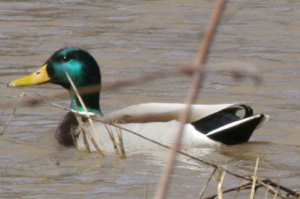 from large lakes to urban park ponds. Most of today’s domestic ducks are descendants of the Mallard. One problem throughout the world is that the mallard has been introduced, sometimes to the detriment of native species – and not just native ducks. So, there are places that the Mallard is considered invasive.
from large lakes to urban park ponds. Most of today’s domestic ducks are descendants of the Mallard. One problem throughout the world is that the mallard has been introduced, sometimes to the detriment of native species – and not just native ducks. So, there are places that the Mallard is considered invasive.
Mallards are know to crossbreed with multiple other species such as pintails and black ducks.1
Mallard eggs are creamy to greenish. The chicks hatch in about 23 – 30 days and fledge in 52 -70 days. The chicks are able to leave the nest in 1 day from hatching. Only the female incubates the eggs and takes care of the ducklings. Mallards frequently interbreed with their closest relatives such as the American Black Duck.
The Mallard is one of the most popular ducks for hunters. It has a lot to do with their large population and wide distribution. A popular method is to hunt over decoys. Mallard meat is mild and excellent to cook.
Identification:
The drake mallard is 22″ – 26″ long, has a wingspan of 32″ – 39″ and weighs 2 – 4lbs. Females are slightly smaller.
Male:
The most prominent identifying feature of the male mallard is its iridescent green head with a white ring at the base of the neck. Its bill is yellow to green. The breast and sides are silvery white. The back is gray.
Female & Juveniles: The female is mottled brown overall with a lighter breast and darker back. Her bill is orange with black blotches.
Both sexes have orange feet and legs. They have blue-violet speculums with white margins.
The biggest problem I have had is identifying female Mallards from the American Black Duck. The American Black Duck is darker and has no white borders to its purplish speculum and its tail is dark.
Habitat:
Mallards can be found in all wet areas – from marshes, lakes, agricultural lands to urban ponds
Territory:
Mallards are the most widespread and abundant duck in North America. They breed from Alaska most of Canada, the USA and into Mexico. They migrate south to the Southern USA into Mexico. Many birds stay north and will migrate only when forced by iced rivers and lack of food.
Diet:
Mallards eat mostly plant matter and can be seen in and around agricultural farms. They also eat insects and larvae and aquatic invertebrates. Mallards are dabblers, feeding at the surface of water often times tipping up in shallow water. They will also move to fields and feed on corn, rye and other agricultural grains.
1. Field & Stream November 2011 pg 4: Fowl Fusion by: T. Edward Nickens
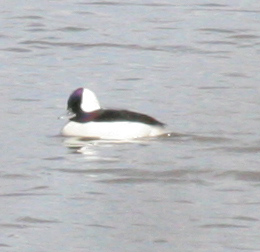
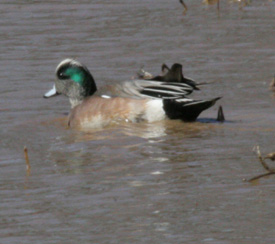 because the white stripe resembles a bald man’s head. The population declined in the 1980’s as a result of drought. Since then they have steadily increased in numbers.
because the white stripe resembles a bald man’s head. The population declined in the 1980’s as a result of drought. Since then they have steadily increased in numbers.
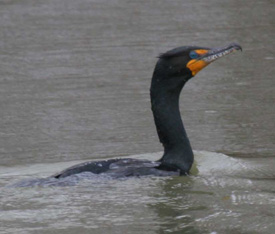
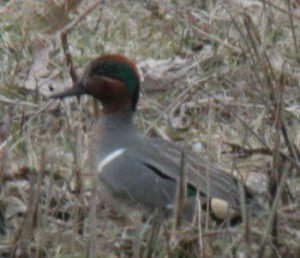 Iridescent green face patch sweeping through eye and tapering to the back of head. Chest is buff with dark spotting. The flanks are gray and back Vertical white line at fore part of flanks. Horizontal black line above flanks, buff outer under-tail coverts bordered by black. The central under-tail coverts are black.
Iridescent green face patch sweeping through eye and tapering to the back of head. Chest is buff with dark spotting. The flanks are gray and back Vertical white line at fore part of flanks. Horizontal black line above flanks, buff outer under-tail coverts bordered by black. The central under-tail coverts are black.